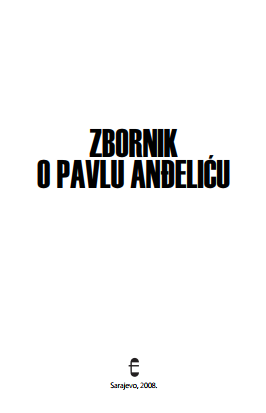Heraldički problem vladarskog i državnog grba Bosne prema koncepciji Pave Anđelića
The heraldic issue of Bosnia's ruling and national coat of arms according to the concept of Pavo Anđelić
Author(s): Emir O. Filipović
Subject(s): Archaeology, Museology & Heritage Studies, Middle Ages, Recent History (1900 till today), Cultural Essay
Published by: Franjevačka teologija Sarajevo
Keywords: BiH; Bosnia; heraldry; issue; coat of arms; Pavo Anđelić; concept;
Summary/Abstract: Since the correct interpretation of heraldry can result in knowledge about precisely defined political programmes and personal aspirations of Bosnian rulers in the Middle ages, the main aim of this paper is to present an outline of history of the medieval Bosnian coat of arms through the works of Pavao Anđelić, who is the first historian from Bosnia and Herzegovina to have systematically researched medieval Bosnian heraldry. His contribution to our knowledge of this subject is immense because he dealt with a large number of different heraldic problems, of which his work on the coat of arms of the Bosnian state and its monarch is certainly the most important one. The main issue of Bosnian heraldry is based on the fact that Bosnian kings used two different coats of arms during the same period of time. It is thought that one of these symbols represents the Bosnian state, while the other one could represent the king. If this assumption were to be right, this specific case of the Bosnian coat of arms would be documented as a rare occurrence in European heraldry. The other problem that arises with this question is of a more historical than heraldic nature; what were the motives for the inconsistent use of one symbol for representation of the king? Through his research Pavao Anđelić was able to form a specific concept of coexistence of these different heraldic devices used by Bosnian rulers. His theory rests mainly on the idea of territorial unity of Bosnian lands which was formed during the reign of king Tvrtko I (1353-1391). According to his works, the coat of arms formed by king Ostoja (1398-1404; 1409-1418) during his second reign represents the entire Bosnian kingdom (including the Serbian lands), while the old device of king Tvrtko I continues to be used as a symbol of the Kotromanić dynasty and Bosnia proper.
Book: Zbornik o Pavlu Anđeliću
- Page Range: 33-55
- Page Count: 23
- Publication Year: 2008
- Language: Bosnian
- Content File-PDF

